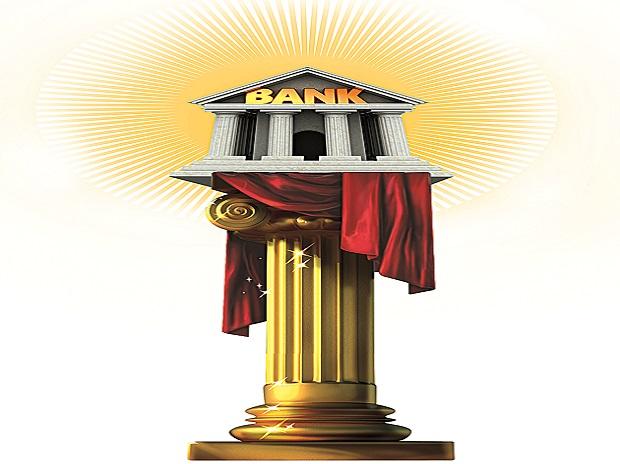Are Mahindra And Mahindra To Enter Into Banking: The Impact Of Business Corporates To Land Their Feet Into Formal Banking!
Industrial houses cannot be banking," Veteran Banker Mr Vaghul argues, recalling previous encounters and the rise of state control of banks. Then, even in professional banking circles, there was talk that things were not going well at industrial conglomerate-owned banks.

Mahindra! What comes to your mind very first when you hear this word? Most probably, automobiles, then it might be a tech. You may also hear this name in the formal banking domain. Yeah, you read that right. Mahindra & Mahindra (M&M), which has interests in industries as diverse as automotive, technology services, and non-bank lending, is preparing to expand its footprint into formal banking by purchasing roughly 10% of private-sector lender RBL Bank.
M&M announced recently that it already owns 3.5% of the lender, a position acquired through secondary market transactions. When the deal is completed, M&M will be the largest shareholder in RBL Bank, alongside investment firm Maple.
However, it seems like the news did not go well initially in the market as the shares of tech-to-tractor giant Mahindra & Mahindra fell as much as 7% the next day after the business announced ambitions to expand its foothold in the banking industry by acquiring a stake in private sector lender RBL Bank. M&M shares fell up 7% to Rs 1,438.80 in the early session Wednesday, despite a fivefold increase in volume.
)
The need for permission from the banking apex regulator- To buy a 5% or more shareholding in a bank, approval from the Reserve Bank of India (RBI) is required.
Mahindra’s declaration comes when regulators are concerned about corporate houses owning banks. Following public outrage over an internal working group recommendation to permit such ownership, the Reserve Bank of India abandoned a plan that would have allowed corporate houses to control banks eventually. The Mahindra Group already controls Mahindra Finance, a non-banking finance firm.
The company’s interest in the lender is the most recent twist in the RBL saga. The bank had significant deposit erosion in early 2020, soon before the outbreak of Covid. It repaid the deposits but was compelled to seek cash in November 2020 to maintain investor trust.
The RBI ordered the bank’s long-term CEO, Vishwavir Ahuja, on vacation on Christmas Eve 2021, and he was replaced by R Subramaniakumar in June last year. The bank’s net profit for the quarter ending June 2023 was Rs 288 crore, up 43.2% yearly due to more significant interest revenue and lesser provisions.
Don’t you think you heard a similar story a few periods ago? Recall the acquisition of PMC bank by Bharatpe, earlier headed by none other than the famous Shark Mr Ashneer Grover. Former BharatPe Chief Ashneer Grover declared on the eighteenth of May that Centrum-BharatPe’s acquisition of the crisis-hit Punjab and Maharashtra Cooperative Bank (PMC) was the smartest company move in history. Though this decision was logical for the PMC bank, would the entry of large corporations into formal banking always benefit the economy?

Opinion from the veteran banker.
In inaugurating his book ‘Reflections’ in April 2023, and describing his views on India’s financial landscape, veteran banker Mr Narayanan Vaghul mentioned that large corporates would never be allowed to start a bank in India. He contends that India has learned from its pre-bank nationalisation experience and would never make the same mistakes again by allowing large corporations to enter the banking industry. In the penultimate round of licencing, before it was turned off, a slew of corporates sought unsuccessfully for a banking licence, in which Mr Grover (mentioned above) played the successful game.
A discussion paper published by the RBI two years ago urged for allowing significant enterprises to access funds to promote economic expansion. This discussion, however, garnered severe criticism from many, including former RBI executives, and was never concluded.
Why does the veteran banker believe that large corporates should be allowed to enter the domain of formal banking?
Vaghul believes the financial resources required for economic progress will come from the general population, eager to invest in a competently operated lender like a bank. “Industrial houses cannot be banking,” Mr Vaghul argues, recalling previous encounters and the rise of state control of banks. Then, even in professional banking circles, there was talk that things were not going well at industrial conglomerate-owned banks.
Well, that was a wise point that needs to be discussed by industry experts!

Big corporate giants to step into formal banking- A table full of optimism and anticipated repercussions!
The RBI put forward a report of its Internal Working Group in November 2020, recommending that major corporate/industrial entities be allowed to promote banks, subject to relevant regulatory changes. Similarly, it suggested that well-managed non-banking financial firms (NBFCs), including those controlled by corporate houses, be evaluated for conversion into full-fledged banks. It also increased the upper limit on promoters’ interest in a private bank from 15% to 26%. Collectively, the ideas paved the path for corporate participation in banking, which has not been allowed since the nationalisation of banks in 1969.
Some experts are cautiously optimistic that corporate entry will bring capital and competition to the banking sector. In contrast, many others are concerned that corporate-owned banks will lend to corporate houses run by the same promoters (connected lending), creating a conflict of interest and increasing the risk of bad loans. Concerns have also been raised about the growing concentration of economic power in the hands of a few.
Former RBI governor Raghuram Rajan and former deputy governor Viral Acharya have raised concerns about the RBI recommendations, pointing out that the RBI ignored the advice of experts it had interviewed. They have also questioned the proposal’s urgency.
Calls to open up banking licencing to more private companies, and even to privatise public sector banks, are not new and have frequently resulted from perceived problems of poor loans and mismanagement in the public sector.

Let us explore why enabling giant corporate/industrial firms to enter banking is not a justified idea.
Connected Lending.
The fundamental argument against corporate entrance into banking is the risk of connected lending, which occurs when banks lend to related-party corporate companies owned or controlled by the bank’s promoters without respect for prudential standards.
Only independent banks with no ties to business or other major partisan groups can efficiently assess loan applicants without bias. They can also effectively supervise the implementation of funded projects to reduce moral risks.
On the other hand, banks owned by industry groups will be under persistent pressure to choose group firms over more worthy ones. This is known as connected lending, and it will not only weaken the bank’s function as an effective financial middleman and discourage efficient money utilisation, but it will also impact its profitability and solvency. Thus, connected lending by corporate-owned banks may be utilised to support group business projects at low-interest rates. The project risks are effectively shifted from the business group to the banks.
History tends to repeat itself.
The concern about connected lending stems from previous experiences with private banks before bank nationalisation in 1969.
When significant banks were part of corporate groupings in the years preceding nationalisation, an overly large and disproportionate fraction of their lending went to enterprises where directors had [a direct or indirect stake]. An official committee discovered that two-thirds of bank advances were directed either to enterprises in the same business group as the bank itself or to firms with which bank directors had a traceable link. Lending was determined by influence rather than project screening, resulting in overexposure to a few clients.
As a result, the RBI proposals ignore the realities in the banking industry that drove nationalisation. Nationalisation was essential because, despite the government’s repeated attempts, private bank founders who invested little equity transferred public money to enterprises where the promoters had a direct or indirect stake. Such related lending was an issue in the pre-nationalisation era, not just from an ethical standpoint but also in terms of credit risk exposure and access to credit. Credit was scarce in agriculture and the small-scale economy.
Privately held banks curtailed branches and limited their activity to cities to minimise expenses at the expense of inclusion. Finally, many banks were weak and unstable due to exposure to a few projects that piqued the promoters’ enthusiasm.

Furthermore, there is no evidence that the situation would be any different if corporate banks began operating now.
Corporations can grow to be too large to control.
New banking licences will simply strengthen major business groupings that currently control many critical areas of the economy, such as telecommunications, retail, and software. With ties to banks, industrial organisations would be able to threaten the interests of small businesses. They could also use their financial competence to enter new markets and concentrate their riches.
Large industrial and corporate entities’ substantial funds and market supremacy might give them greater policy leverage. This will result in the formation of new major power centres, hindering the government’s capacity to guide the economy in the correct direction.
The issue is more than just the risks of connected lending and its consequences for financial stability. Colossal business houses, with their strong ties to the political elite, may resist the type of strict regulation and oversight associated with the RBI. The former is almost certain to lose any confrontation between the RBI and a business entity. As a result, the RBI’s enviable reputation as a regulator will suffer.
Private banks are a source of macroeconomic risk.
Too many banks, particularly credit-expansion-oriented private banks, pose unique hazards to the financial industry.
If too much debt is a bad thing, then banks are the source of that bad thing. They are critical to “swollen finance” and the economic havoc it may cause. To avoid catastrophic financial crises, we must accept the harsh reality private banks have the potential and incentives to grow the credit supply constantly.
Three characteristics are likely to transform private banks into weapons of mass devastation. The ability to produce loans, high leverage, and risk-taking incentives. Under public ownership, the last of them is primarily subdued. Bankers’ pay in PSBs is not linked to their profitability. As a result, PSBs are more risk cautious, and their actions are not as motivated by economic concerns.
On the surface, this may appear to be a problem. PSBs underperform private financial institutions precisely for these reasons and have been criticised. The macro consequence, on the other hand, is beneficial. We have a steady system since not everyone is looking for riskier bets with huge pay-offs for managers. A little bit harsh, but that’s the reality.

Conclusion.
Though privatisation and the introduction of corporate entities may bring about innovation and new sets of positive attributes to the economy, they may not be successful in all sectors for long-term sustainable economic growth.




